Rating Roundup - A Brief Description of Navy Skills
To help you better know your fellow Navymen and the jobs they perform, here is a description of the 65 Navy ratings. Each description contains the name of the rating, its symbol, and a resume of the duties in that rating.
The distinction between rating and rate: A rating is an occupation in the Navy made up of duties calling for similar skills, abilities, and aptitudes. A grade within a rating is a rate. The non-petty officer titles are also called rates even though people in these first three pay grades are commonly known as "non-rated personnel."
DECK Group I
BOATSWAIN'S MATE (BM)
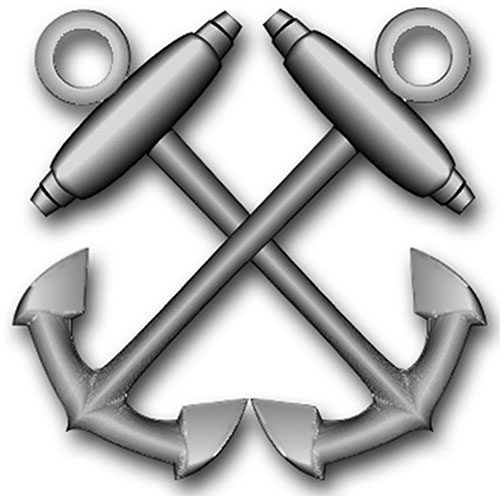
Insignia for US Navy Boatswain's Mate (BM). Crossed Anchors; Crowns Down. GGA Image ID # 1d83324997
Boatswain's mates train and supervise personnel in all activities relating to marlinspike, deck, and boat seamanship and oversee the maintenance of the ship's external structure and deck equipment. They act as petty officers in charge of small craft and may perform duties as master-at-arms, serve in or take charge of gun crews, and damage control parties.
In port, three of the crew are on deck watch 24/7 (in hazardous areas such as war zones, there are more than three, depending on the ship's size). They are the Officer of the Deck, the Boatswain's Mate of the watch, and the Messenger of the Watch (usually a Seaman or Seaman Apprentice). Boatswain's mates are also responsible for the "deck side" watch.
They are stationed close to the gangway and monitor all the comings and goings of persons to and from the ship. At sea, the boatswain's mate of the watch is within earshot of the conning Officer (on the bridge). The boatswain's mate of the watch supervises the rest of the enlisted watch standers on deck.
They include the helmsman, the messenger of the watch, and all the lookouts. In port or at sea, the boatswain's mate of the watch is responsible for making all announcements to the crew, everything from chow call to general quarters (battle stations).
QUARTERMASTER (QM)
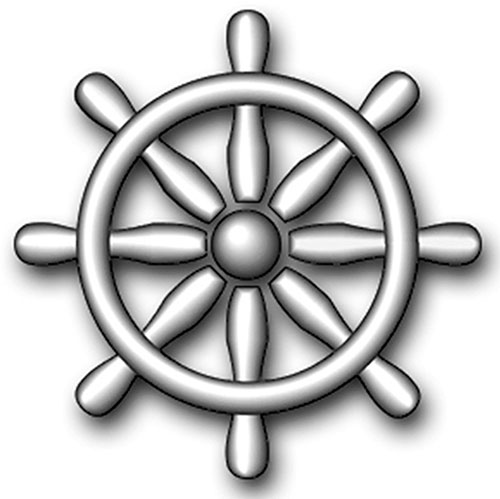
Insignia for US Navy Quartermaster (QM). A Ship's Helm. GGA Image ID # 1d83b05ca6
Quartermasters assist the navigator and officer of the deck (OOD), steer the ship, take radar bearings and ranges, make depth soundings and celestial observations, plot courses and command small craft.
SIGNALMAN (SM) Signalmen send ande various visual messages, handle and route message traffic, operate voice radio and repair visual signaling devices. They also render honors to ships and boats, and serve as navigator's assistants. Disestablished on 30 September 2004 and duties absorbed by Quartermaster rating.
RADARMAN (RD) Radarmen perform basic control functions of CIC as plotters, operators, etc. They apply doctrinal procedures of combat techniques as found in standard publications and manuals. Operational and preventive maintenance of radar, radio telephone and associated equipment is within their range of duties. Merged into Operations specialist in 1972.
SONAR TECHNICIAN (ST)
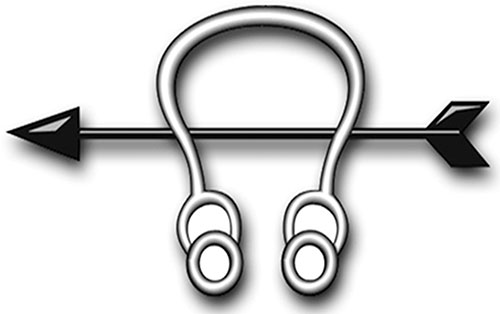
Insignia or Rating Badge for a US Navy Sonar Technician (ST). Earphones with Arrow in Horizontal Position, Point to the Front. GGA Image ID # 1d843e597f
Sonar technicians are responsible for underwater surveillance. They assist in safe navigation and are responsible for undersea communications. They operate and repair sonar equipment and auxiliaries. Sonar Technicians operate, maintain, and repair sonar systems, antisubmarine warfare fire control equipment, and other equipment associated with underwater detection, counter-detection, warfare, and communications.
ORDNANCE Group II
TORPEDOMAN'S MATE (TM)
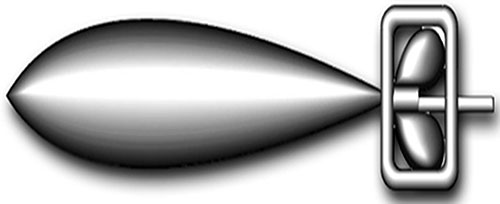
Insignia or Rating Badge for a US Navy Torpedoman's Mate (TM). A Torpedo, Head to the Front. GGA Image ID # 1d845d3c78
Torpedomen test and overhaul underwater ordnance such as torpedoes and depth charges. Their duties include the maintenance of underwater launching devices and related test equipment. Torpedomen serve in surface craft, submarines and aviation activities.
TMs are responsible for all phases of weapons loading, unloading and storage on all classes of submarines. This includes torpedoes, Tomahawk missiles and countermeasure devices. A TM works on high pressure air and hydraulic systems to maintain loading and launching capabilities for torpedo and vertical launch tubes.
MINEMAN (MN)
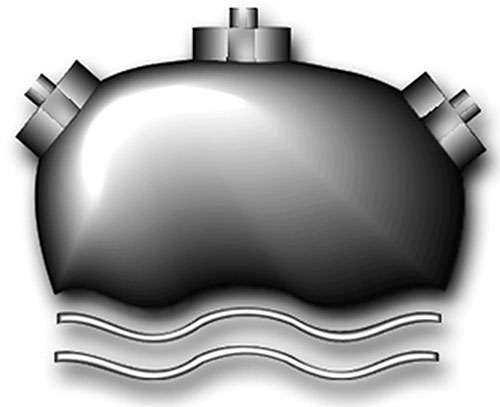
Insignia or Rating Badge for a US Navy Mineman (MN). A Floating Mine. GGA Image ID # 1d8492bc7b
Minemen test, maintain and install mines utilized aboard ships and aircraft, and maintain minelaying equipment.
Minemen test, maintain, and repair mines and their components. They maintain mine handling and minelaying equipment. They assemble, test, and deliver mines to the planting agent.
At sea, minemen primarily crew Avenger Class mine countermeasures ships and the new Independence Class littoral combat ships as a part of the MCM module.
Their duties at sea include but are not limited to:
- Operating mine hunting sonar.
- Operating remote-controlled submersibles in prosecuting mine-like contacts.
- Rigging and deploying minesweeping gear and standing normal underway deck and combat information center watches.
GUNNER'S MATE (GM)
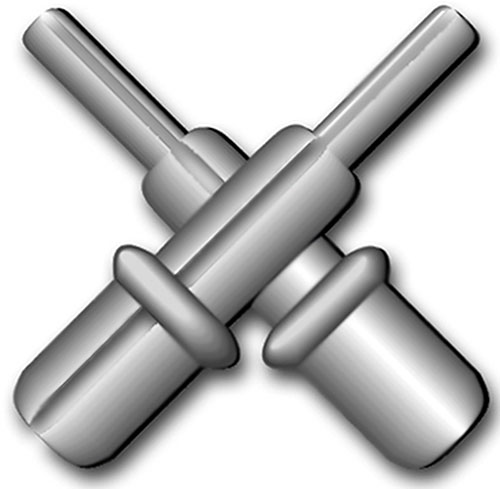
Insignia or Rating Badge for a US Navy Gunner's Mate (GM). Crossed Gun Barrels; Muzzles Up. GGA Image ID # 1d84ee29cf
Gunner's Mates operate and maintain missile launching systems, guns, turrets, projectors, and associated equipment. They test and inspect ammunition, ordnance components, and magazines and supervise crews assigned to handle weapons systems. They also keep logs and records pertaining to shipboard weapons.
Gunner's mates operate and maintain all gunnery equipment, guided-missile launching systems, rocket launchers, guns, turrets, and associated equipment. They repair electrical, electronic, hydraulic, and mechanical systems and make detailed casualty analyses. They test ammunition, missiles, and their ordnance components. GMs train and supervise personnel in the handling and stowage of ammunition, missiles, and assigned ordnance equipment.
FIRE CONTROL TECHNICIAN (FT)
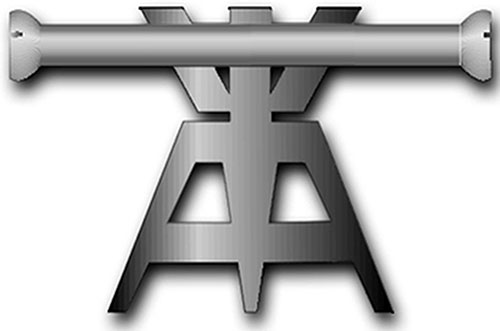
Insignia or Rating Badge for a US Navy Fire Control Technician (Ft). A Range Finder. GGA Image ID # 1d8501746b
Fire Control Technicians operate, test and maintain weapon control systems (excluding surface ship 'underwater systems and launchers). They also perform missile test and telemetering and maintain the associated test equipment.
Fire control technicians maintain the electronic equipment used in submarine weapons systems. They are responsible for the operation and maintenance of the complex electronic, electrical and mechanical equipment required to ensure the accuracy of Navy guided-missile systems and underwater weapons.
They are responsible for boat safety by recognizing and analyzing data from several critical systems including sonar, radar, periscope, radio, and torpedo inputs.
MISSILE TECHNICIAN (MT)
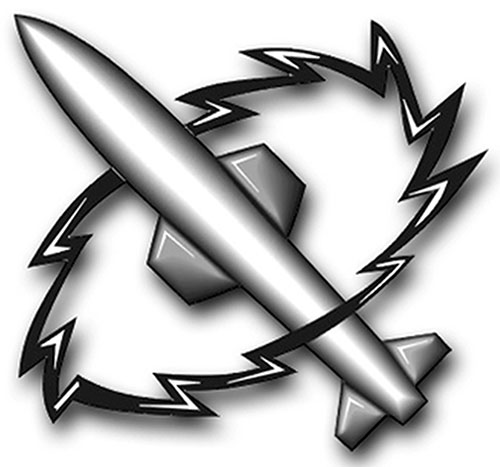
Insignia or Rating Badge for a US Navy Missile Technician (MT). A Guided Missile Surrounded by an Electronic Wave. GGA Image ID # 1d8509632a
Missile Technicians perform maintenance and tests on fleet ballistic missiles (excluding the internal guidance systems) and the various supporting components connected with missile control.
Missile technicians operate and maintain the UGM-133 Trident II D5 missile Strategic Weapon System (SWS) carried aboard ballistic missile submarines and at strategic weapons facilities.
Missile technicians operate and maintain electronic, mechanical, hydraulic, and pneumatic strategic weapon subsystems, test and operate the MK98 fire-control system and MK 6 guidance system, perform classified targeting operations and provide physical security to nuclear weapon systems.
ADMINISTRATIVE & CLERICAL Group V
RADIOMAN (RM) Radiomen transmit and receive messages and log and file them according to official procedures. They also operate teletype equipment, tune radio receivers and transmitters and perform preventive maintenance and repair on related equipment.
COMMUNICATIONS TECHNICIAN (CT) Communications Technicians perform specialized duties under the direction of the Assistant Chief of Naval Operations (Communications) / Director, Naval Communications. They are generally assigned to Naval Security Group activities, Naval Communication Stations, and major staff commands afloat and ashore.
YEOMAN (YN) Yeomen perform administrative, clerical and secretarial duties which include typing, filing, preparation and routing of correspondence, plus maintenance of records, publications and service jackets. In some cases they serve as reporters for courts-martial and fact-finding bodies.
POSTAL CLERK (PC) Postal Clerks operate Navy post offices, which includes supervision, maintenance of mail directories, security of postal effects, and the preparation of correspondence, records and files.
PERSONNELMAN (PN) Personnelmen perform administrative duties involved in enlisted manpower utilization. This includes making records and reports as well as accounting procedures and service record maintenance. They also conduct interviews and counsel personnel on service careers and keep publications and directives pertaining to enlisted personnel.
JOURNALIST (JO) Journalists assist public information officers and commanding officers in public relations and preparation of Navy news releases. They coordinate special events, write feature articles on naval activities, arrange radio and television programs and may be assigned to full-time duties as editors or staff members of ship and station newspapers.
SHIP'S SERVICEMAN (SH) Ship's Servicemen operate and manage resale activities such as ship's stores, commissary stores and Navy Exchanges.
COMMISSARYMAN (CS) Commissarymen serve as cooks and bakers for the general mess on ships and shore stations. Their duties include preparation of food, maintenance of sanitation and cleanliness, assistance in menu planning, cost accounting and quality control subsistence items.
DISBURSING CLERK (DK) Disbursing Clerks open and maintain military pay records, prepare payroll and money lists, vouchers and transportation requests, and furnish information on allotments and savings.
STOREKEEPER (SK) Storekeepers order, inspect, package, ship and issue materials and cargo; account for property, supplies and equipment (excluding aviation items); and maintain records dealing with such material.
MACHINE ACCOUNTANT (MA) Machine Accountants operate data processing equipment and are familiar with electronic data processing applications and management of processing offices with computer installations.
ENGINEERING & HULL Group VII
MACHINIST'S MATE (MM) Machinist's Mates operate, maintain and make repairs to ship's propulsion and auxiliary equipment. They are also in charge of such equipment as anchor windlasses, cranes, air-conditioning and refrigeration equipment.
ENGINEMAN (EN) Enginemen operate, maintain and repair internal combustion engines and auxiliary engineroom refrigeration and air-conditioning equipment.
MACHINERY REPAIRMAN (MR) Machinery Repairmen make shop repairs on shipboard machinery. They use both machine and hand tools as well as precision measuring devices.
BOILERMAN (BT) Boilermen operate marine boilers and fireroom machinery, maintain and repair associated equipment and keep inventories and records on fuel and water supplies.
BOILERMAKER (BR) Boilermakers test, maintain and repair marine boilers, heat exchanges and associated equipment. Their duties include welding and keeping maintenance records of boiler repair and operation.
MOLDER (ML) Molders operate foundries aboard ship and at shore stations. They make molds and cores, pour castings of ferrous and nonferrous metals, clean castings and pour bearings.
PATTERNMAKER (PM) Patternmakers make wooden, plaster and metal patterns used by molders in Navy foundries. They make full-scale layouts of wooden patterns and templates and keep inventory of such items.
DAMAGE CONTROLMAN (DC) Damage Controlmen are qualified in the use of damage control equipment, carpentry, firefighting and the control of nuclear, biological and chemical warfare agents. They coordinate damage control parties and are responsible for maintaining and repairing damage control gear and preserving watertight integrity.
SHIPFITTER (SF) Shipfitters plan, supervise and perform tasks necessary for fabrication, installation and repair of metal structures, piping and plumbing. They also perform duties associated with damage control.
INTERIOR COMMUNICATIONS ELECTRICIAN (IC) Interior Communications Electricians maintain and repair IC systems, gyro compass systems, amplified and unamplified voice communications and related equipment.
ELECTRICIAN'S MATE (EM) Electrician's Mates are in charge of electrical equipment, wiring and its maintenance and repair. They test and rebuild electrical equipment in shops both ashore and afloat.
ELECTRONICS Group III
ELECTRONICS TECHNICIAN (ET) Electronics Technicians maintain, repair and calibrate electronic equipment used for communication, detection, tracking, recognition and identification, aids to navigation, electronic countermeasures, and radiac.
DATA SYSTEMS TECHNICIAN (DS) Data Systems Technicians maintain electronic digital data systems and equipment; they inspect, test, calibrate and repair computers, tape units and related components as well as their test equipment.
PRECISION EQUIPMENT Group IV
INSTRUMENTMAN (IM) Instrumentmen maintain, test, calibrate and repair gages, meters, clocks, typewriters, adding machines, etc., and repair mechanical parts of electrical instruments. Instrumentmen may be assigned to tenders, repair ships and shore stations.
OPTICALMAN (OM) Opticalmen maintain, repair, and overhaul optical devices such as binoculars, sextants, telescopes, submarine periscopes, rangefinders, optical gun sights, etc. This includes inspection, disassembly, repair, refinishing of parts and reassembly.
MISCELLANEOUS Group VI
LITHOGRAPHER (LI) Lithographers perform administrative, supervisory, and mechanical duties required in Navy offset, lithography, and letterpress printing. They lay out and prepare camera copy; produce and strip negatives and positives; prepare lithographic plates; set type and prepare forms for printing; operate process cameras and bindery equipment; and make mechanical alignments and adjustments to equipment.
ILLUSTRATOR DRAFTSMAN (DM) Illustrator Draftsmen design and prepare drawings and illustrations for presentation and reproduction. They operate reproduction machines and prepare, edit and file ship and aircraft mechanical, electrical, electronic and machine drawings and blueprints. They make computations required for the performance of illustration drafting to cover general mathematics and geometry as well as edit and lay out photography.
MUSICIAN (MU) Musicians provide music as members of bands and orchestras for various functions and ceremonies in the interest of morale and public and foreign relations.
CONSTRUCTION Group VIII
BUILDER (BU) Builders plan, supervise and perform tasks required for construction, maintenance and repair of wood, concrete and masonry structures. They plan and direct the placement and flow of building materials and direct crews in the performance of carpentry, fabrication of concrete roadways, etc.
CONSTRUCTION ELECTRICIAN (CE) Construction Electricians plan, supervise and perform tasks required to install, operate and service electric generating and communication systems. They supervise activities of crews assigned to string, install and repair interior, overhead and underground cables, transformers, switchboards, .etc., as well as train personnel in procedures and techniques.
CONSTRUCTION MECHANIC (CM) Construction Mechanics perform tasks involved in maintenance and repair of automotive, materials-handling and construction equipment. They assign and supervise activities of personnel who locate and correct malfunctions and issue parts and maintain records.
ENGINEERING AID (EA) Engineering Aids plan, supervise and perform tasks required in construction surveying, drafting and quality control. They prepare progress reports, schedules, material and labor estimates and establish basic quality control systems. They also obtain field notes for conversion into topographic maps.
EQUIPMENT OPERATOR (EO) Equipment operators perform tasks involving the use of automotive, materials-handling and construction equipment. They coordinate efforts of crews in execution of construction, earthmoving, roadbuilding and paving assignments as well as maintain records on mobile and stationary equipment used.
AVIATION
AEROGRAPHER’S MATE (AG) Aerographer’s Mates observe, collect and analyze meteorological data for military use. They make visual and instrumental weather and sea condition observations, interpret weather codes and forecast sea and weather conditions.
AIR CONTROLMAN (AC) Air Controlmen perform air traffic control duties in control towers, radar centers, and air operations offices both ashore and afloat. They operate ground- and carrier-controlled approach systems, assist pilots in the preparation and processing of flight plans and clearances, and maintain current flight planning information and reference materials.
AVIATION ANTISUBMARINE WARFARE TECHNICIAN (AX) Aviation Antisubmarine Warfare Technicians inspect and maintain aircraft antisubmarine warfare systems and their related test equipment.
AVIATION BOATSWAIN’S MATE (AB) Aviation Boatswain's Mates operate and maintain flight deck launching and recovery equipment. They handle aircraft on carriers, tenders, mooring and parking areas; service crash, firefighting and rescue equipment; and perform damage control duties. They also handle aviation fueling, lubricating oil and inert gas systems.
STEELWORKER (SW) Steelworkers plan, supervise and execute tasks directly related to fabrication, erection and dismantling of metal structures. They control site deployment of materials and equipment and train and drill personnel in safe and expeditious execution of fabrication tasks.
UTIUTIESMAN (UT) Utilities men plan, supervise, and perform tasks as prescribed by drawings and specifications involved in installation and repair of heating, air-conditioning, steam, fuels and water distribution systems. They schedule and evaluate installation and operational tasks, procure and issue supplies and repair parties, maintain records, and train personnel in installation and repair techniques.
AVIATION Group IX
AVIATION ELECTRICIAN’S MATE (AE) Aviation Electrician's Mates maintain aircraft electrical and instrument systems including power generation, components of aircraft controls, electrical starting systems, warning systems, automatic pilots, and related test equipment.
AVIATION ELECTRONICS TECHNICIAN (AT) Aviation Electronics Technicians inspect and maintain aviation electronic equipment (excluding ASW equipment) such as detection, identification, communications, navigation, target drone and pilotless aircraft equipment and its associated test components. They also operate airborne CIC equipment.
AVIATION FIRE CONTROL TECHNICIAN (AQ) Aviation Fire Control Technicians inspect and maintain aircraft armament control systems such as bomb director systems, fire control radars, computers, gyros, and their related equipment as well as air-launched guided missile test equipment.
AVIATION MACHINIST’S MATE (AD) Aviation Machinist’s Mates Inspect, repair and maintain power plants and their related equipment in both reciprocating and jet-powered aircraft. They also prepare aircraft for flight and conduct periodic inspections and service procedures as well as supervise power plant shops.
AVIATION MAINTENANCE ADMINISTRATIONMAN (AZ) Aviation Maintenance Administrationmen perform administrative, management and clerical duties required in implementing and supporting the naval aircraft maintenance program.
AVIATION ORDNANCEMAN (AO) Aviation Ordnancemen maintain and repair aircraft armament and ordnance equipment, including towed targets, small arms, and handling components. They also fuze and load aircraft munitions, nuclear weapons, aerial mines and torpedoes. Their duties include testing, loading and assembly of air-launched guided missiles and the supervision of aviation ordnance facilities.
AVIATION STOREKEEPER (AK) Aviation Storekeepers store and issue aviation supplies and stocks of technical aviation items. They prepare and maintain records pertaining to stock control and make reports of excesses, shortages, or damages in their inventory.
AVIATION STRUCTURAL MECHANIC (AM) Aviation Structural Mechanics maintain and repair aircraft, airframe, and structural components, including movable surfaces and their hydraulic and pneumatic actuating systems. Their duties also include maintenance of air-conditioning, pressurization, oxygen, canopy and seat ejection systems as well as fabrication and repair of metallic and non-metallic materials.
AIRCREW SURVIVAL EQUIPMENTMAN (PR) Aircrew Survival Equipment- men maintain and repair parachutes, survival equipment, and flight clothing and related equipment. They rig and pack parachutes, equip life rafts, maintain oxygen equipment, pressure suits, and test and repair safety belts and shoulder harnesses.
PHOTOGRAPHER’S MATE (PH) Photographer's Mates accomplish photographic work required by the Navy. They make pictorial records of historical and newsworthy events aboard ship and ashore. They also inspect and maintain cameras and associated equipment as well as maintain photographic files, records, and supplies.
PHOTOGRAPHIC INTELLIGENCEMAN (PT) Photographic Intelligencemen identify and extract intelligence data from aerial, surface, and radarscope photography. They prepare materials for use in attack and reconnaissance mission planning. They also maintain and utilize intelligence files including maps, charts, plot sheets and photographic interpretation.
TRADEVMAN (TD) Tradevmen install, service and maintain training devices. They devise and construct audiovisual training aids and methods of simulating operational conditions of equipment. They act as operators of training devices used to maintain the proficiency of teams or individuals.
AVIATION SUPPORT EQUIPMENT TECHNICIAN (AS)—Navy's newest rating specializes in maintenance and repair of equipment used in support of naval aircraft, such as jet engine starters, mobile power units, and cranes.
MEDICAL Group X
HOSPITAL CORPSMAN (HM) Hospital Corpsmen perform duties as assistants in the prevention and treatment of disease and injuries and in the administration of medical departments ashore and afloat, and in the field with the Marine Corps. On small ships and stations not having a medical officer attached, Senior Hospital Corpsmen perform all the duties of the medical department, within the limitations of their professional competence.
DENTAL Group XI
DENTAL TECHNICIAN (DT) Dental Technicians perform clinical and administrative duties, assisting dental officers in treatment of patients, first aid, and oral prophylactic treatment under supervision. Dental Technicians may be qualified in dental prosthetic laboratory techniques and the maintenance and repair of dental equipment. They must also be prepared to assist in prevention and treatment of NBC warfare casualties.
STEWARD Group XII
STEWARD (SD) Stewards operate and manage commissioned officers’ messes. They cook, bake, serve meals, prepare menus and order subsistence items. They maintain refrigerated spaces and assigned storerooms and maintain officers' living quarters as well as make records and keep books of financial transactions.
"Rating Roundup (In Two Parts) A Brief Description of Navy Skills," In All Hands Magazine: The Bureau of Naval Personnel Career Publication, July (No. 594) and October 1966 (No. 597).
